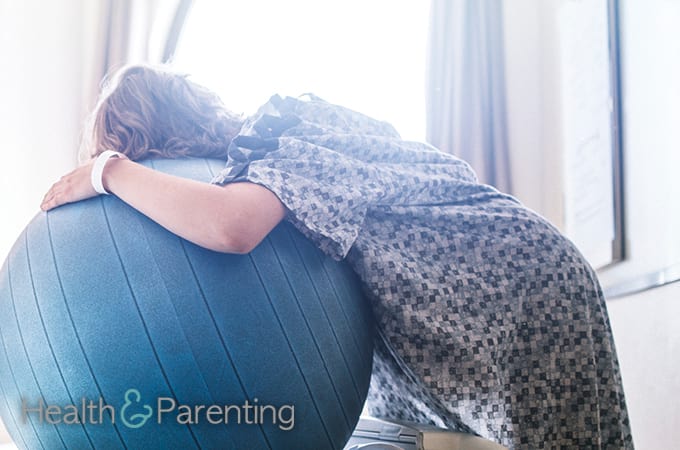Staying active during childbirth will encourage your labour to progress. At the beginning of labour, you may find you can move around quite easily. Walking, rocking and swaying are all actions that may be useful to you during labour. You should aim to stay active throughout the birth if possible, as this will help your contractions to be stronger and more effective.
In an active birth, you should be able to move and change position freely. While women on TV are usually shown giving birth flat on their back, this is not an ideal position for labour. Research has found that women who give birth lying down experience more painful and less effective contractions, longer labours and reduced blood flow to their babies.
Birthing positions
You may find that changing position every so often helps you to deal with any discomfort caused by the contractions. Follow your instincts and do whatever you feel you need to. Here are a few suggested positions that have been found to be effective during the pushing stage of labour:
- Kneeling – kneeling upright with your legs apart is a particularly useful position for women experiencing backache during contractions. You can adopt this position using your birth partner, a birthing ball, chair or bed to lean on for support. During contractions, flex your lower back and buttocks as you bear down.
- Squatting – this position opens your pelvis up to 30 percent more than lying down, so is well worth a try. Squatting allows gravity to help you labour, which can lead to a shorter pushing stage. This is a tiring position though, so you may want to rehearse squatting during pregnancy to see how long you can hold the position for. During labour, it is advisable to be supported in your squatting position. Your birthing partner can can stand behind you, and support you from under your arms as you squat. Some birthing rooms have ropes for use during active labour, these hang from the ceiling and you use them to support yourself in a squat position. Some midwives have birthing stools to help you get into a supported squat.
- Sitting – this position is great for helping you rest between contractions. You could sit on a birthing ball, chair or toilet – it’s up to you. Sitting opens up your pelvis and allows the baby to travel down the birth canal.
- Leaning – leaning forward during contractions can help to manage discomfort. If you are having a water birth, you may find that leaning over the side of the pool can provide more relief. You could lean over a chair, the bed, or lean on your partner for support. Leaning also frees up your back so that your partner can provide a lower back massage during contractions, this may be useful if you are feeling the contractions in your back.
It’s impossible to predict how you will experience labour on the day, so just get into whichever position feels right for you at the time. You should find that you naturally adopt different positions throughout the birth, and these will help your labour to progress.
What positions are you hoping to try during labour?
Written by Fiona, proud owner of a toddler, @fiona_peacock
This information is not intended to replace the advice of a trained medical doctor. Health & Parenting Ltd disclaims any liability for the decisions you make based on this information, which is provided to you on a general information basis only and not as a substitute for personalized medical advice. All contents copyright © Health & Parenting Ltd 2017. All rights reserved.










